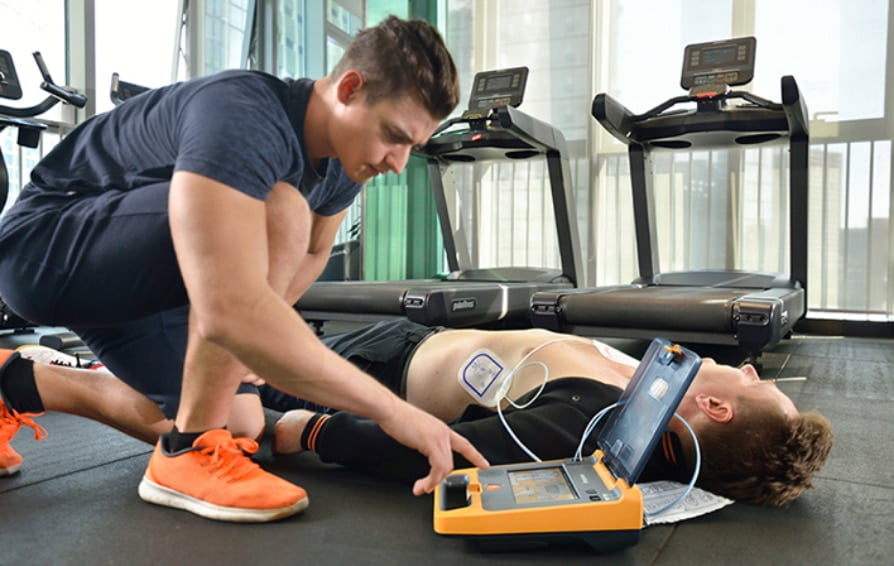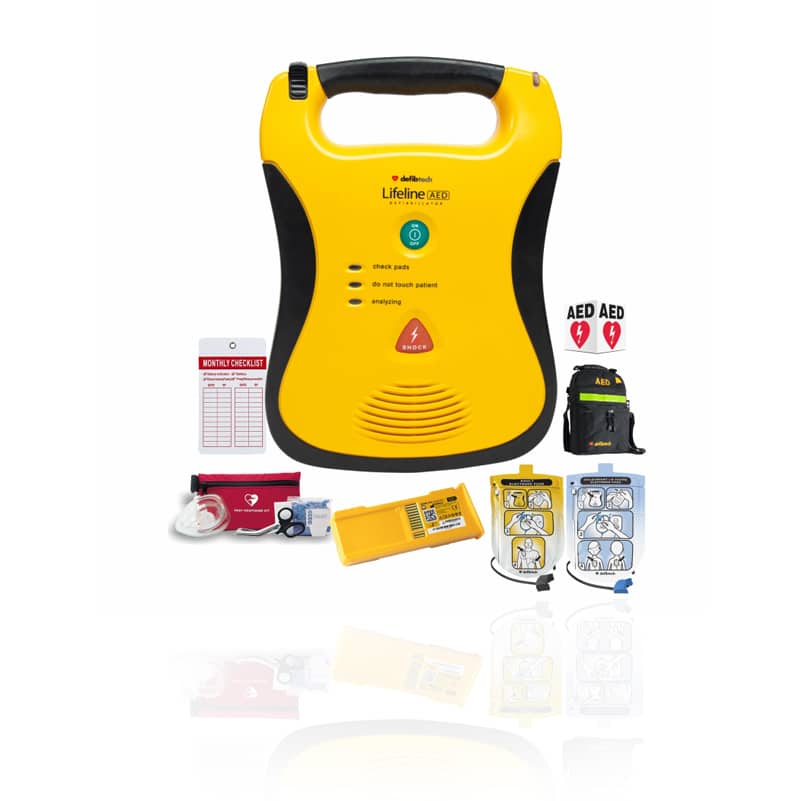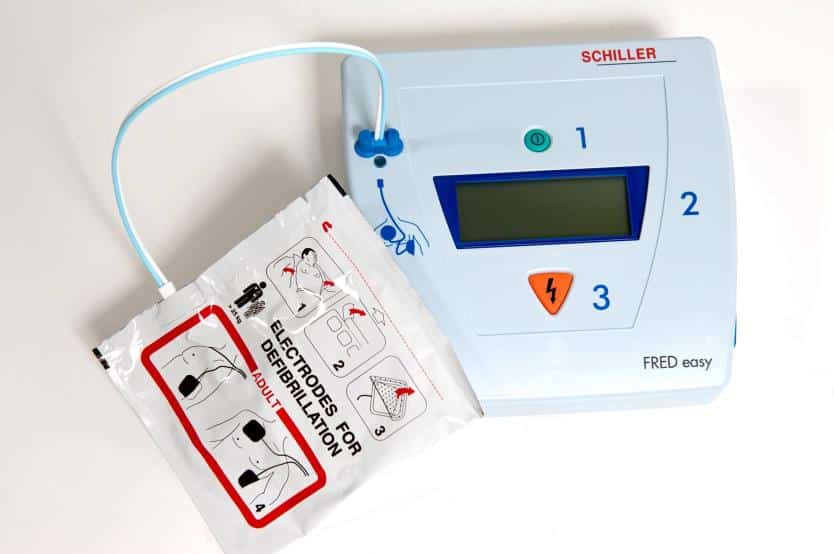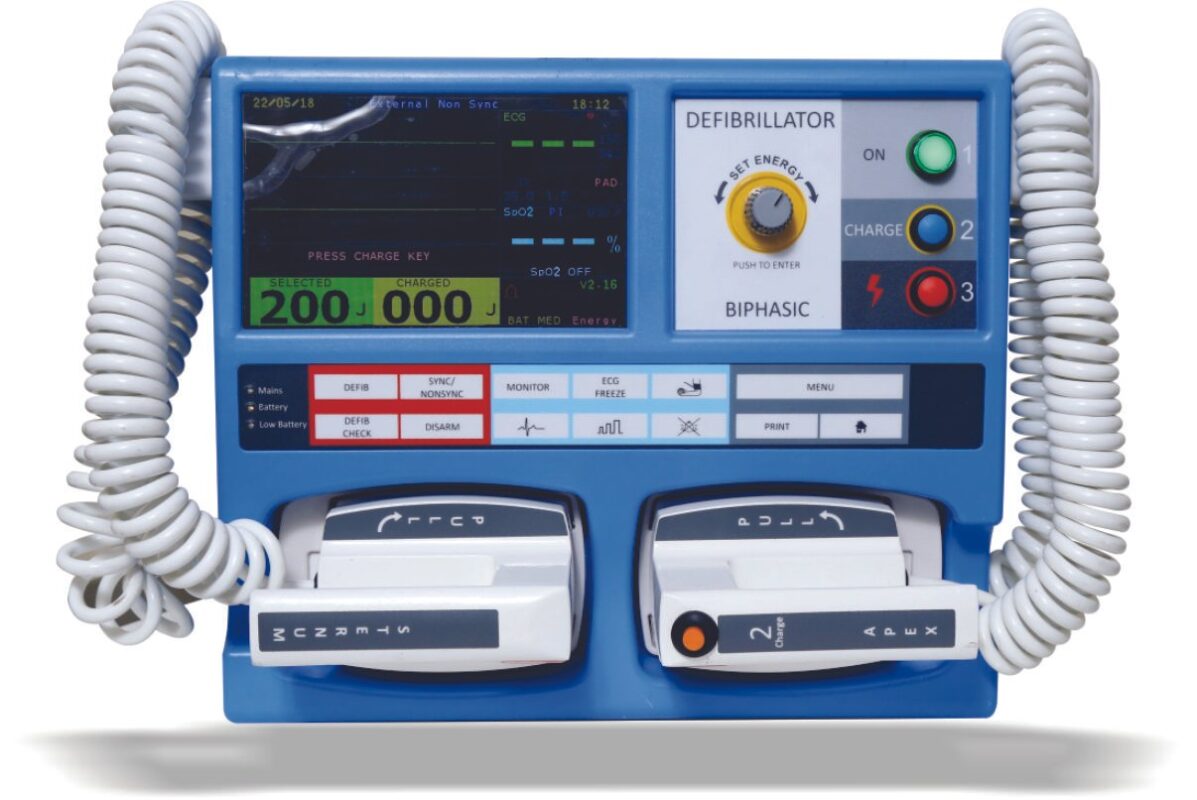No products in the cart.
AED's
Monophasic and Biphasic AED Shocks — Learn the Difference
Automated External Defibrillators (AEDs) are life-saving devices designed to treat sudden cardiac arrest (SCA) by delivering an electrical shock to the heart. This shock can restore a normal heart rhythm and is critical in emergency situations. Understanding the difference between monophasic and biphasic AED shocks is essential for anyone involved in cardiac care or emergency response.

This blog post will delve into the details of monophasic and biphasic AED shocks, their advantages, disadvantages, and the latest research in the field.
What is an AED?

An AED is a portable device that checks the heart’s rhythm and can send an electric shock to the heart to try to restore a normal rhythm. AEDs are used to treat sudden cardiac arrest, a condition where the heart suddenly and unexpectedly stops beating.
Monophasic AED Defibrillators

Monophasic AED defibrillators are the earlier generation of devices used in cardiac emergencies to deliver an electric shock to the heart. These defibrillators generate a single, unidirectional pulse of electricity, meaning the current flows in one direction from one electrode to the other. The intent is to reset the heart’s electrical activity and restore a normal rhythm.
History and Development
Introduced in the 1960s, monophasic AEDs represented a significant advancement in emergency cardiac care. For decades, they were the standard technology used by medical professionals. Their design and functionality were straightforward, making them relatively easy to manufacture and maintain.
Energy Levels and Efficacy
Monophasic defibrillators typically require higher energy levels to be effective, often delivering shocks at 200-360 joules. The need for higher energy is due to the single-direction flow of current, which must be strong enough to penetrate the chest and affect the heart adequately. However, higher energy levels can increase the risk of damage to heart tissue and other complications.
Advantages and Use Cases
The main advantages of monophasic AEDs include their simplicity and long-standing track record. Their straightforward design made them reliable tools in emergency situations for many years. Despite being largely replaced by biphasic devices, monophasic AEDs are still found in some older medical facilities and areas with limited resources.
Disadvantages and Limitations
The primary disadvantage of monophasic AEDs is their higher energy requirement, which can lead to more significant myocardial damage and lower overall efficacy compared to biphasic defibrillators. Studies have shown that the success rate of first-shock defibrillation is lower with monophasic shocks, leading to a preference for biphasic technology in most modern applications.
Biphasic AED Defibrillators

Biphasic AED defibrillators are a more advanced generation of devices used to treat sudden cardiac arrest. Unlike their monophasic counterparts, biphasic defibrillators deliver two sequential pulses of electricity in opposite directions. The first phase of the current flows from one electrode to the other, while the second phase reverses the direction. This bidirectional approach improves the efficiency of the shock.
History and Development
Biphasic technology was introduced in the late 20th century as an improvement over monophasic defibrillation. Research and clinical trials demonstrated that biphasic shocks were more effective at lower energy levels, leading to their rapid adoption in medical practice. Today, biphasic AEDs are considered the gold standard in defibrillation technology.
Energy Levels and Efficacy
One of the key advantages of biphasic AEDs is their ability to deliver effective shocks at lower energy levels, typically ranging from 120 to 200 joules. The bidirectional nature of the shock allows for better current distribution across the heart, resulting in higher first-shock success rates and reduced risk of heart tissue damage. This increased efficacy at lower energy levels makes biphasic defibrillation a safer and more effective option.
Advantages and Use Cases
Biphasic AEDs offer several advantages over monophasic models, including improved safety and higher efficacy. The lower energy requirements reduce the likelihood of post-shock complications, such as myocardial damage. Additionally, the compact and lightweight design of many biphasic AEDs makes them suitable for a wide range of settings, from hospitals and emergency medical services to public access defibrillation programs in schools, airports, and other public spaces.
Disadvantages and Limitations
While biphasic AEDs are generally superior to monophasic models, they come with a higher initial cost. The technology is more complex, which can result in increased maintenance and training requirements. Despite these challenges, the benefits of biphasic defibrillation often outweigh the drawbacks, making them a preferred choice in most modern medical settings.
Conclusion of Monophasic and Biphasic AED Shocks
Understanding the differences between monophasic and biphasic AED shocks is crucial for making informed decisions in cardiac care. While monophasic shocks have historical significance, biphasic shocks offer greater efficacy and safety. As technology advances, AEDs will continue to evolve, providing better outcomes for patients experiencing sudden cardiac arrest.
FAQs of Monophasic and Biphasic AED Shocks
Q1: What is the main difference between monophasic and biphasic AED shocks?
A: The main difference is the direction and pattern of the electrical current. Monophasic shocks deliver a single pulse in one direction, while biphasic shocks deliver two pulses in opposite directions.
Q2: Why are biphasic shocks considered more effective?
A: Biphasic shocks are considered more effective because they require lower energy levels to achieve the same or better results, reducing the risk of heart tissue damage and increasing the success rate of restoring normal heart rhythm.
Q3: Are monophasic AEDs still used today?
A: Monophasic AEDs are less common today due to the superior efficacy and safety profile of biphasic AEDs. However, some older models and certain medical settings may still use monophasic technology.
Q4: What are the benefits of using a biphasic AED?
A: Benefits of biphasic AEDs include lower energy levels required for defibrillation, reduced risk of heart tissue damage, higher success rates in restoring normal heart rhythm, and generally better patient outcomes.
Q5: How do AEDs determine when to deliver a shock?
A: AEDs analyse the heart’s rhythm and determine if a shock is needed based on predefined algorithms. If the device detects a life-threatening arrhythmia, it will prompt the user to deliver a shock.
Q6: What recent advancements have been made in AED technology?
A: Recent advancements include real-time feedback systems, enhanced diagnostics, integrated communication systems, and improved algorithms for shock delivery, all aimed at improving patient outcomes during sudden cardiac arrest.






